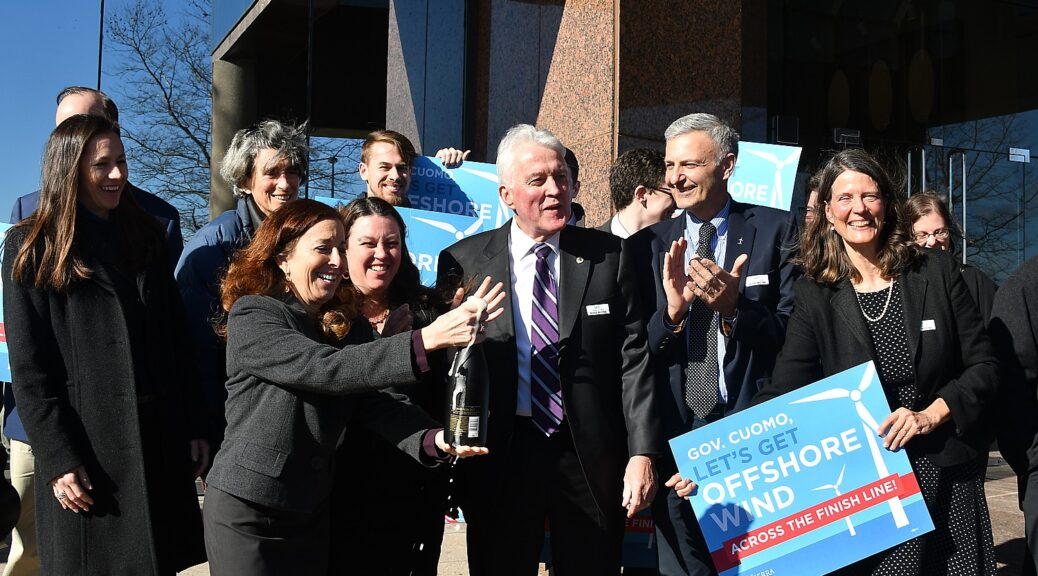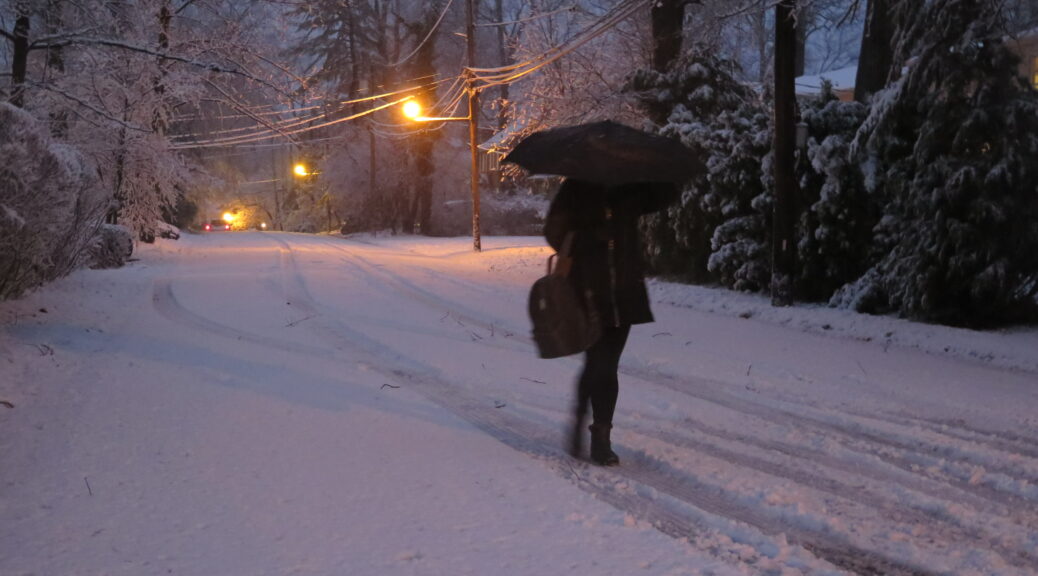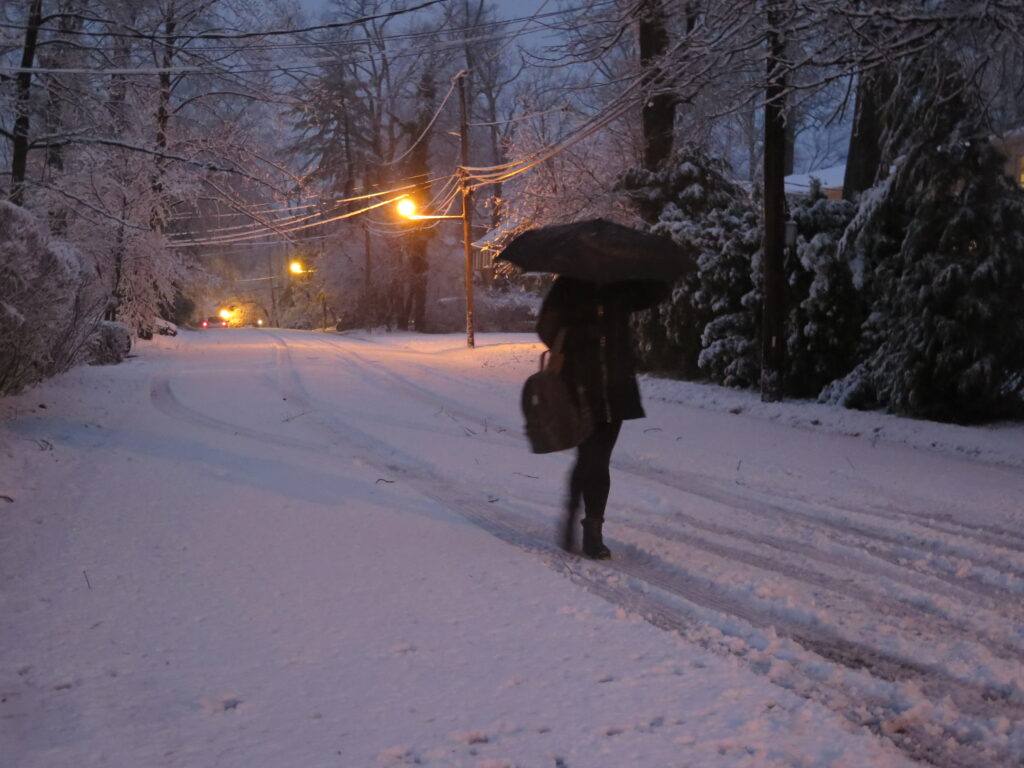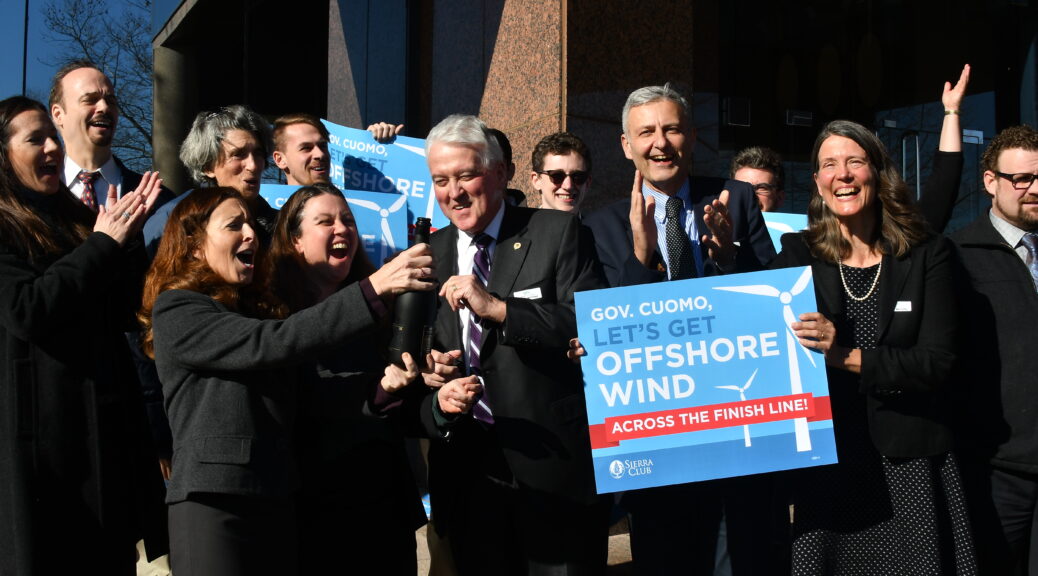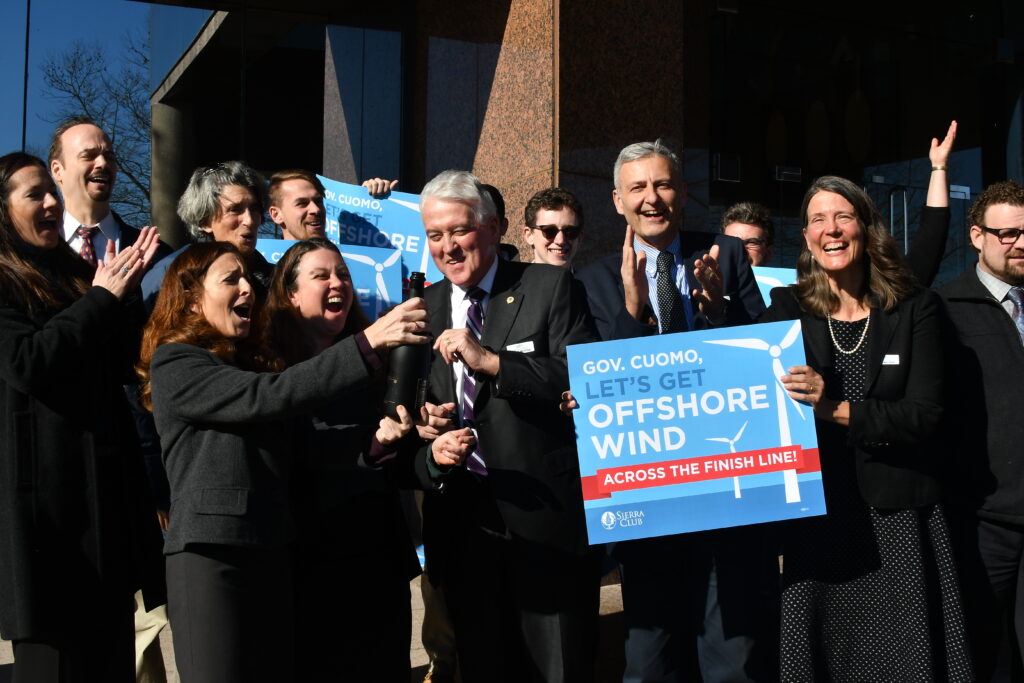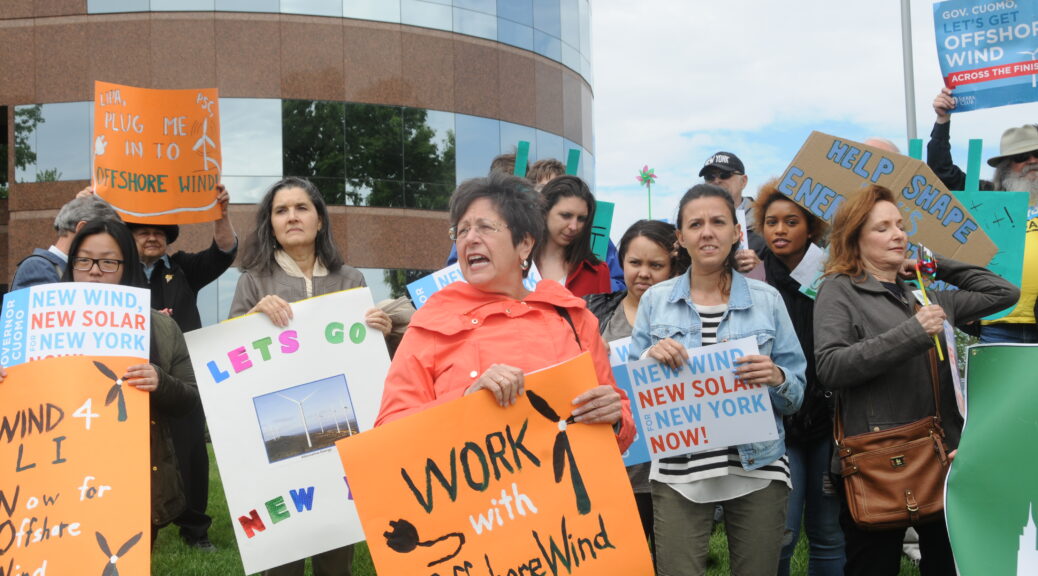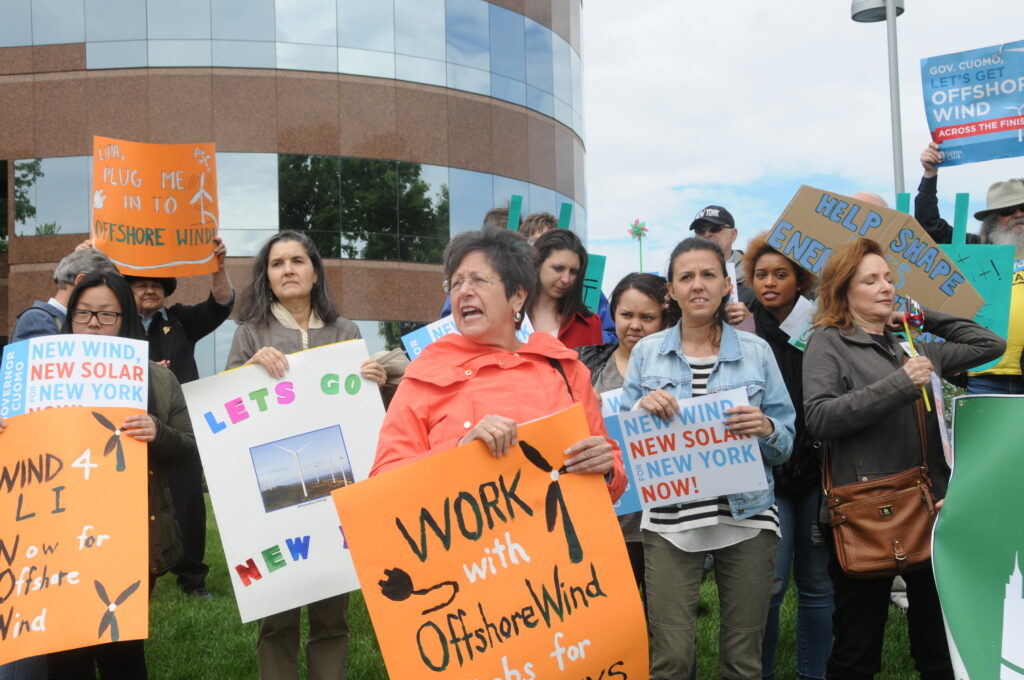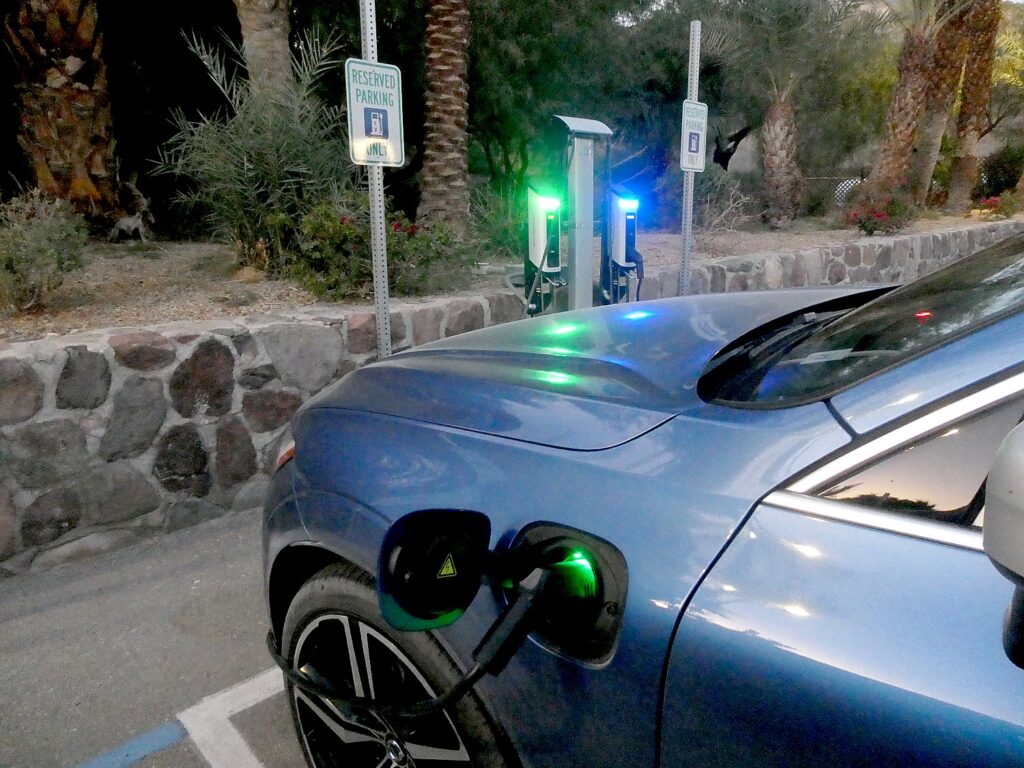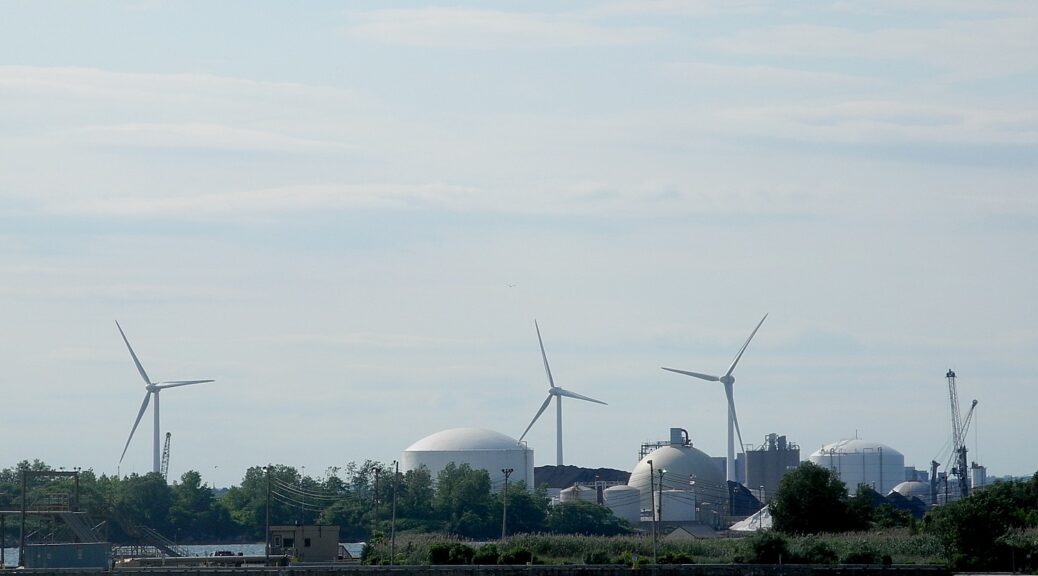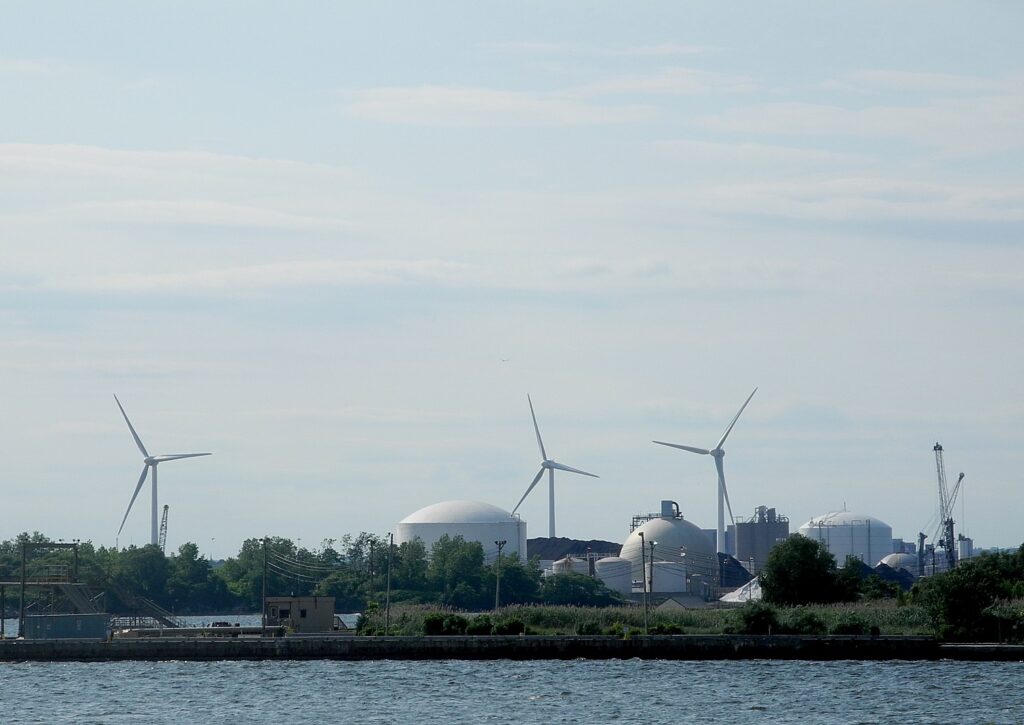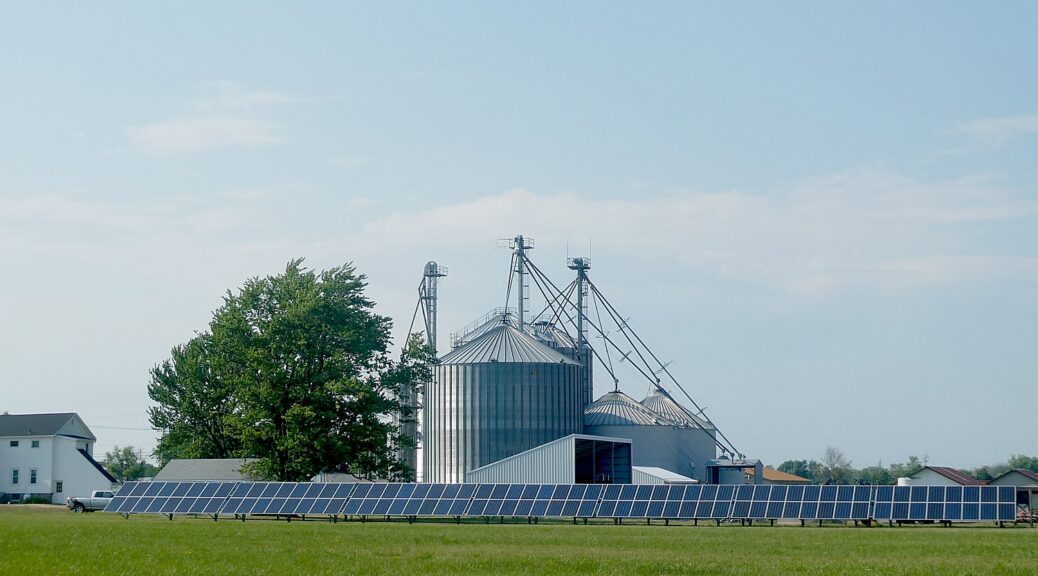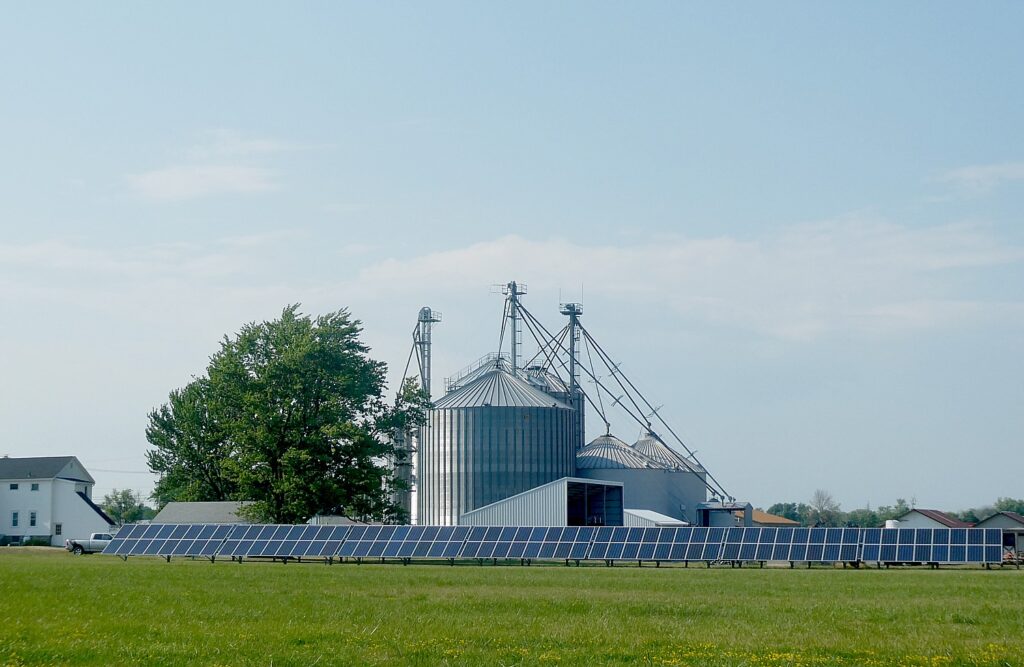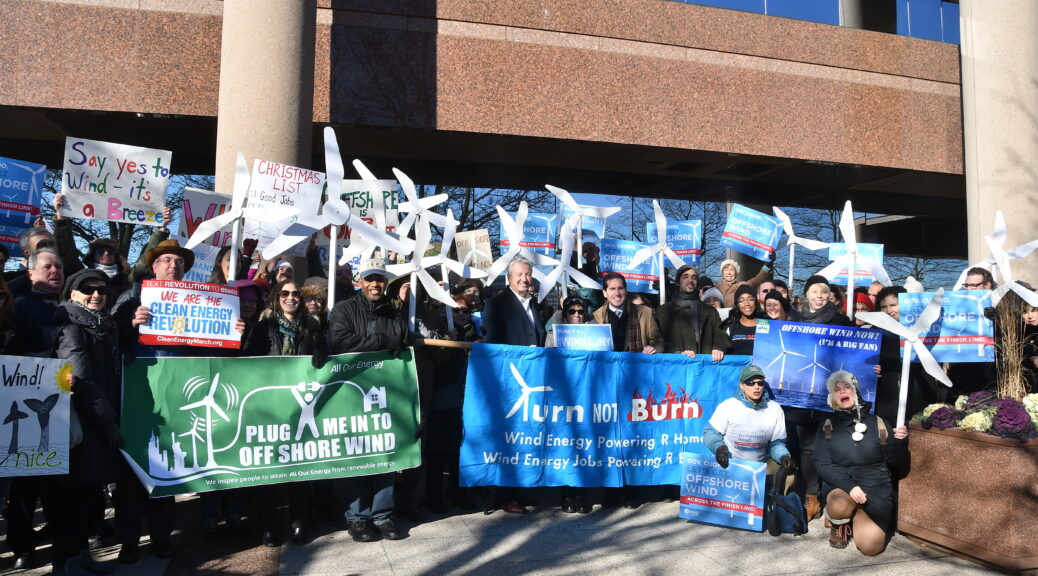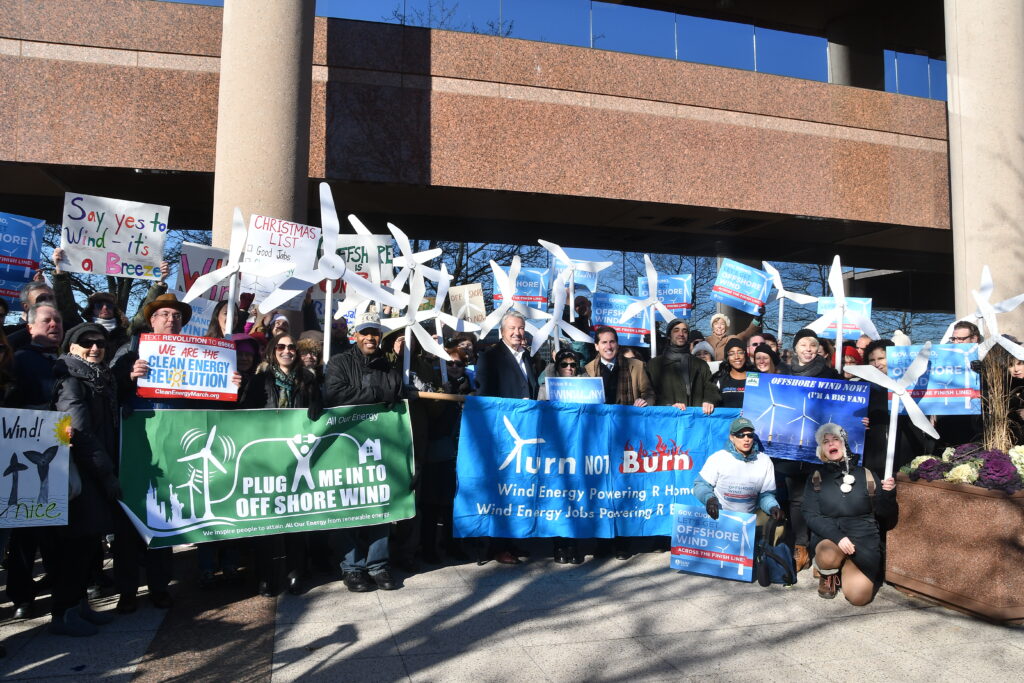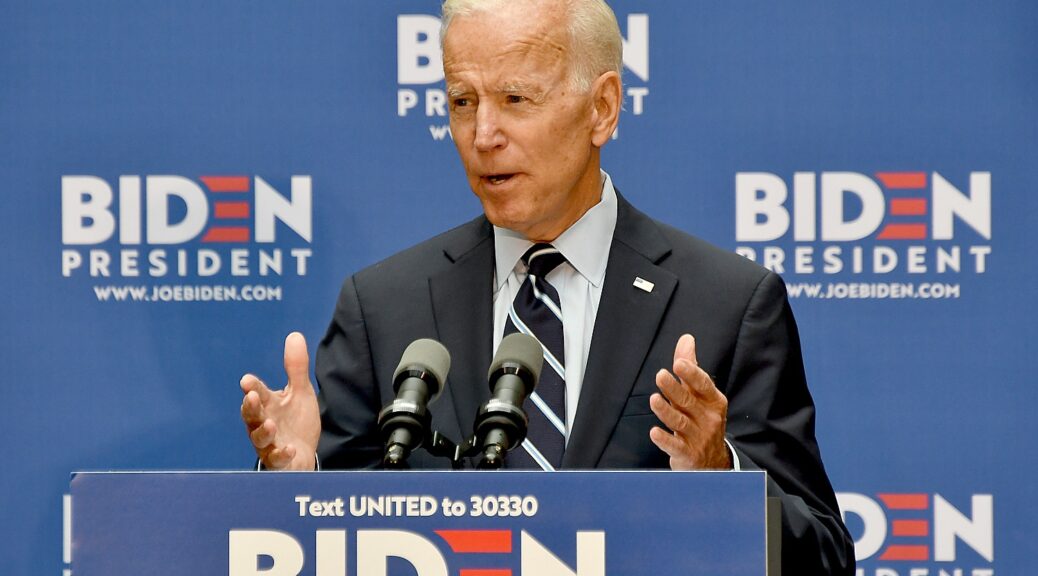South Fork Wind Project to Kickstart New York’s Offshore Wind Industry, Provide Clean Energy to Long Island
Supports the Climate Leadership and Community Protection Act Goal to Develop 9,000 Megawatts of Offshore Wind by 2035
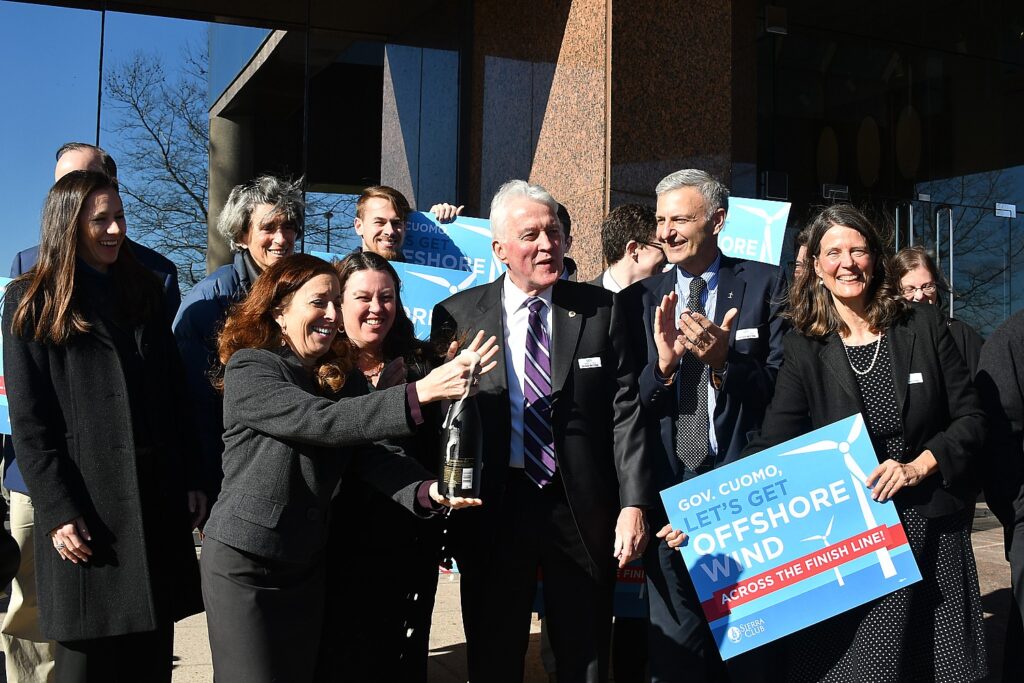
New York State Governor Kathy Hochul, alongside United States Secretary of the Interior Deb Haaland and other elected officials, on February 11 celebrated the start of construction of South Fork Wind, New York’s first offshore wind project, jointly developed by Ørsted and Eversource off the coast of Long Island. Building on the Bureau of Ocean Energy Management’s (BOEM) January issuance of the Final Sale Notice for the New York Bight, the recent key offshore wind contract milestone, and the State of the State announcement of a nation-leading $500 million investment in offshore wind ports, manufacturing, and supply chain infrastructure to accompany New York’s next offshore wind solicitation, New York continues to advance the Climate Leadership and Community Protection Act goal to develop 9,000 megawatts of offshore wind by 2035.
“The harsh impacts and costly realities of climate change are all too familiar on Long Island, but today as we break ground on New York’s first offshore wind project we are delivering on the promise of a cleaner, greener path forward that will benefit generations to come,” Governor Hochul said. “South Fork Wind will eliminate up to six million tons of carbon emissions over the next twenty-five years benefiting not only the Empire State, but our nation as a whole. This project will also create hundreds of good-paying jobs, helping spur economic growth across the region as we continue to recover from COVID-19. This is a historic day for New York, and I look forward to continue working with Secretary Haaland as we lead our nation toward a greener, brighter future for all.”
“America’s clean energy transition is not a dream for a distant future – it is happening right here and now,” US Department of Interior Secretary Deb Haaland said. “Offshore wind will power our communities, advance our environmental justice goals, and stimulate our economy by creating thousands of good-paying union jobs across the nation. This is one of many actions we are taking in pursuit of the President’s goal to improve both the lives of American families and the health of our planet.”
The Governor, who made today’s announcement in Wainscott, celebrated South Fork Wind kickstarting New York’s offshore wind generation when it becomes operational in late 2023. South Fork Wind will be one of the first commercial-scale offshore wind projects to commence operation in North America. Selected under a 2015 Long Island Power Authority (LIPA) request for proposals to address growing power needs on the east end of Long Island, the project will be located about 35 miles east of Montauk Point and its 12 Siemens-Gamesa 11 MW turbines will generate approximately 130 megawatts of power – enough to power over 70,000 homes. Its transmission system will deliver clean energy directly to the electric grid in the Town of East Hampton. Over a 25-year period, South Fork Wind is expected to eliminate up to six million tons of carbon emissions, or the equivalent of taking 60,000 cars off the road annually.
NYSERDA President & CEO Doreen M. Harris said, “With construction beginning on the South Fork Wind project, we are solidifying New York State’s clean energy vision and blazing a trail as we lead the nation in offshore wind development. As our state’s first offshore wind project, South Fork is helping to usher in the grid of the future as New York continues to build the most robust offshore wind project and supply chain in the nation, strengthen workforce development and partnerships with labor to provide a pipeline of talent for these critical projects, and establish the green economy that will power New York for years to come.”
Long Island Power Authority CEO Thomas Falcone said,”In 2017, the forward-thinking approach of the LIPA Board of Trustees led to the approval of the South Fork Wind project at a time when there were no other power purchase agreements for offshore wind in the country,” Long Island Power Authority CEO Thomas Falcone said. “As the first offshore wind farm in New York, South Fork Wind is the beginning of a new industry for our region that will be vital to New York meeting its goal of a zero-carbon electric grid by 2040.”
Indeed, the campaign to get offshore wind power for Long Island and New York State has been years in the making – activists had to battle back against efforts by fossil fuel industry to create NLG terminals in the very area the best in the nation for an offshore wind farm. But just as everything was in place, in 2017, Trump reversed course on promoting clean, renewable energy in favor of fossil fuel and even reignited the prospect of off-shore drilling. The Biden Administration moved swiftly to restart offshore windpower – in California and in New York, seeing the benefits of climate-action initiatives as not only protecting the environment and the economy but promoting jobs.
Department of Environmental Conservation (DEC) Commissioner Basil Seggos said,”New York is setting the example for the nation on tapping into the potential of offshore wind to help meet our energy needs while the state transitions to a cleaner, greener energy future. South Fork Wind is an exciting and transformative project that will help achieve our state’s ambitious goals to reduce greenhouse gas emissions and ramp up renewable energy sources while safeguarding our natural resources and driving new economic opportunities here on Long Island and across the state.”
“South Fork Wind’s groundbreaking is a historic milestone for New York’s offshore wind industry and for all New Yorkers in our efforts to address climate change,” Acting Secretary of State Robert J. Rodriguez said. “The Department of State continues to work with our stakeholders and government partners to minimize potential project impacts and avoid disruptions to our coastal economy as we transition to a cleaner, greener future. Through our combined efforts, New Yorkers will continue to enjoy Long Island’s pristine beaches and the rich ocean resources off our State as we reduce the State’s carbon footprint.”
“This significant milestone solidifies New York’s global leadership in the clean economy,” New York State Department of Labor Commissioner Roberta Reardon said. “The groundwork we lay today is creating new, exciting employment opportunities for New Yorkers while also protecting our environment for future generations. As Co-chair for the Just Transition Working Group, I thank Governor Hochul for leading the charge and for her unending commitment to ensuring the inclusion of disadvantaged communities in this movement.”
Public Service Commission Chair Rory M. Christian said, “The South Fork project will play a key role in developing much needed clean-energy for New York State and it will help New York achieve its nation-leading renewable energy goals while creating jobs and opportunities for individuals and industries. South Fork is a win for Long Island, and a win for all New Yorkers.”
Office of General Services (OGS) Commissioner Jeanette M. Moy said, “The start of the first off-shore wind project in New York State demonstrates Governor Hochul’s strong commitment to meeting the challenges of sustainability and ensuring New York’s future is green. OGS is proud to have a role in the South Fork Wind project and in advancing the State’s forward-looking climate and green-energy initiatives.”
“Offshore wind is crucial to fueling a green economy and promoting sustainable economic opportunities,” Empire State Development Acting Commissioner and President & CEO-designate Hope Knight said. “The start of construction at New York State’s first offshore wind project at South Fork Wind signifies at important step towards achieving clean energy goals and creating green jobs, which advances Empire State Development’s mission to prepare our economy for the future. With today’s announcement, New York State will continue to be leaders in the fight against climate change while strengthening our standing in offshore wind manufacturing.”
This milestone follows BOEM’s approval last month of the project’s Construction and Operations Plan (COP). The COP outlines the project’s one nautical mile turbine spacing, the requirements on the construction methodology for all work occurring in federal ocean waters, and mitigation measures to protect marine habitats and species. BOEM’s final approval of the COP follows the agency’s November 2021 issuance of the Record of Decision, which concluded the thorough BOEM-led environmental review of the project.
Senator Todd Kaminsky said,”Today’s announcement helps solidify New York as a leader in the green economy. The CLCPA set the most aggressive goals in the country and offshore wind on Long Island is central to meeting them. This project is a catalyst and shows that you can think big and get it done on Long Island.”
Assemblymember Steve Englebright said,”The South Fork Wind Project is a key first step to our state’s commitment to reducing greenhouse gases and meeting the challenge of climate change. I applaud Governor Hochul’s vision and determination to advance and enhance New York’s renewable wind energy portfolio.”
Assemblymember Fred Thiele said,”I’m proud to say that Long Island is an emerging trailblazer in renewable energy and will soon lead the state and the nation in offshore wind energy production. South Fork Wind Farm opens an exciting new chapter for us here on the East End, and I look forward to soon having a greener grid powered by this historic investment. I thank Governor Hochul for her continuous leadership and support.”
“Long Island has been a leader in all things clean energy, and as we begin construction on New York’s first wind farm, we are changing how we power our homes and businesses here in Suffolk,” Suffolk County Executive Steve Bellone said. ”This historic project, which puts Suffolk County at the heart of the offshore wind industry and will power roughly 70,000 homes, is a major victory for our economy, for labor, and for our environment as we remain committed to addressing the impacts of climate change on our region.”
East Hampton Town Supervisor Peter Van Scoyoc said,”In 2014 East Hampton was the first municipality in New York to adopt a 100% renewable energy goal. Today, with the beginning of the construction of New York’s first offshore wind farm we are very close to reaching that goal. We applaud Governor Hochul’s nation leading investment in offshore wind energy which puts New York at the forefront of our country’s efforts to combat climate change.”
New York League of Conservation Voters President Julie Tighe said, “Today, we are moving from concept to reality with the groundbreaking of South Fork Wind Farm, New York’s first offshore wind project. Congratulations to Ørstedand Eversource! This day is the culmination of years of perseverance to launch this project and new industry that will change the way we power our economy. We have a long way to go to meet our climate goals, but major investments like this combined with the leadership and commitment of Governor Hochul, Secretary Haaland, and BOEM Director Lefton are setting us on the course for a clean energy revolution.”
“With the start of construction on New York’s first offshore wind farm, we continue to deliver on our vision of a new U.S. energy industry that will generate clean power, jobs, and economic opportunity,” Ørsted Offshore North America CEO David Hardy said. “I am grateful for the many champions who have supported South Fork Wind to get us to this critical moment, and for the Biden Administration and New York’s leadership and commitment to the offshore wind industry.”
Eversource Energy President & CEO Joe Nolan said, “Today we make history as we celebrate the start of construction on New York’s first offshore wind farm. As homegrown experts in regional energy transmission, we have led the way on countless infrastructure projects, but today, we commemorate something entirely new and different. For the very first time, we will be leveraging our expertise to harness the vast, untapped potential of offshore wind.”
Nassau Suffolk Building and Construction Trades Council President Marty Aracich said, “The start of the construction phase for Offshore Wind marks a new era in reaching New York State’s goal of significantly reducing emissions. The skilled trades have a role by placing shovels in the ground as they implement the last leg of this relay race and position NYS to reign supreme along the Eastern Seaboard in combating climate change. Governor Hochul’s shared vision and commitment with NYSERDA enhances the alliance of Orsted/Eversource and North America’s Building Trades Unions. New York State remains focused on providing opportunities that will create a local workforce leading to a brighter, cleaner future for generations to come. Many thanks to Governor Hochul, Secretary of Interior Deb Harland, Amanda Lefton, Doreen Harris, and our partners in Labor for providing leadership as well as a moral compass guiding the earth on a path to heal itself.”
Long Island Federation of Labor, AFL-CIO President John R. Durso said,”This is a victory for Long Island and all New Yorkers. This is not only a crucial step forward in the fight against climate change, but it means jobs and new clean energy resources on Long Island where it is needed most. After many years of hard work in planning and development by Ørsted and Eversource, with support from labor and community allies, we are realizing the success we have all been waiting for.”
South Fork Wind will be built under industry-leading project labor agreements and specific partnerships with local union organizations, ensuring local union labor’s participation in all phases of construction on the project. Onshore construction activities for the project’s underground duct bank system and interconnection facility are the first to begin and will source construction labor from local union hiring halls. Ørsted and Eversource reached these provisions and protections working closely with a range of external organizations and experts, a commitment the companies carry to all stakeholder relationships to support coexistence.
Long Island-based contractor Haugland Energy Group LLC (an affiliate of Haugland Group LLC) was selected to install the duct bank system for the project’s underground onshore transmission line and lead the construction of the onshore interconnection facility located in East Hampton. This agreement will create more than 100 union jobs for Long Island skilled trades workers, including heavy equipment operators, electricians, lineworkers, and local delivery drivers who will support transportation of materials to the project site. Fabrication of the project’s offshore substation is already underway.
New York State has five offshore wind projects in active development, the largest portfolio in the nation. This current portfolio totals more than 4,300 megawatts and will power more than 2.4 million New York homes, and it is expected to bring a combined economic impact of $12.1 billion to the state. The projects are also expected to create more than 6,800 jobs in project development, component manufacturing, installation, and operations and maintenance. Achieving the State’s 9,000 megawatt by 2035 goal will generate enough offshore wind energy to power approximately 30 percent of New York State’s electricity needs, equivalent to nearly 6 million New York State homes, and spur approximately 10,000 jobs.
New York State’s Nation-Leading Climate Plan
New York State’s nation-leading climate agenda is the most aggressive climate and clean energy initiative in the nation, calling for an orderly and just transition to clean energy that creates jobs and continues fostering a green economy as New York State recovers from the COVID-19 pandemic. Enshrined into law through the Climate Leadership and Community Protection Act, New York is on a path to achieve its mandated goal of a zero-emission electricity sector by 2040, including 70 percent renewable energy generation by 2030, and to reach economy wide carbon neutrality.
It builds on New York’s unprecedented investments to ramp-up clean energy including over $33 billion in 102 large-scale renewable and transmission projects across the state, $6.8 billion to reduce buildings emissions, $1.8 billion to scale up solar, more than $1 billion for clean transportation initiatives, and over $1.6 billion in NY Green Bank commitments. Combined, these investments are supporting nearly 158,000 jobs in New York’s clean energy sector in 2020, a 2,100 percent growth in the distributed solar sector since 2011 and a commitment to develop 9,000 megawatts of offshore wind by 2035.
Under the Climate Act, New York will build on this progress and reduce greenhouse gas emissions by 85 percent from 1990 levels by 2050, while ensuring that at least 35 percent with a goal of 40 percent of the benefits of clean energy investments are directed to disadvantaged communities, and advance progress towards the state’s 2025 energy efficiency target of reducing on-site energy consumption by 185 trillion BTUs of end-use energy savings.

